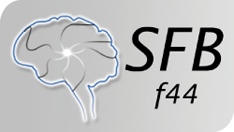Project:
Function of Special AT-rich Sequence-Binding Protein 2 in Aging and Neuronal Pathophysiology
Georg Dechand and Galina Apostolova
Complex behaviors such as learning and memory depend on changes in gene expression and subsequent long-lasting adaptations in synaptic strength and structure. Our current research interests are focused on the mechanisms of neuronal plasticity, with special emphasis on the role of chromatin conformation regulation in adaptive gene transcription.
A classical example of neuronal plasticity is the switch from noradrenergic to cholinergic neurotransmission, which occurs in differentiated postganglionic sympathetic neurons under the influence of target-derived signals. We identified the genome organizer Special AT-rich sequence binding protein 2 (Satb2) as an acutely up-regulated target gene of neurokine/p38 MAPK signaling in sympathetic neurons undergoing trans-differentiation. Our gain-and loss-of-function studies revealed that Satb2 is both necessary and sufficient to trigger the sympathetic neurotransmitter switch. We reasoned that modulation of Satb2 and consequently chromatin architecture by neurotrophic factors might serve as a novel pathway involved in the long-term adaptive processes underlying higher brain functions.
In support of this hypothesis, recent results in our laboratory showed that Satb2 is induced by plasticity-mediating extracellular signals such as BDNF or Ca2+-influx through L-type voltage-gated calcium channels in CNS neurons. The analysis of a conditional mutant lacking Satb2 in the adult forebrain (generated by our group), demonstrated that Satb2 is required for synaptic plasticity and long-term memory formation. In addition, we found that Satb2 interacts with genome organizing proteins of the inner nuclear membrane and regulates the geometry of neuronal nuclei in the hippocampus in vivo. Our findings give us grounds to hypothesize that a Satb2-containing DNA-protein complex determines both the nuclear shape and chromosomal conformations in neurons downstream of L-VGCC and BDNF signaling, thereby integrating plasticity-mediating extracellular signals into changes in the transcriptome.
Our future goals are to provide evidence that Satb2-dependent rearrangements of the nuclear architecture and/or changes in the epigenetic profiles are necessary for higher cognitive functions and that dysfunction of these mechanisms leads to learning and memory deficits. We also aim to study whether cognitive deficits inherent to normal aging and neuropsychiatric diseases are caused by alterations in Satb2 expression or function.






